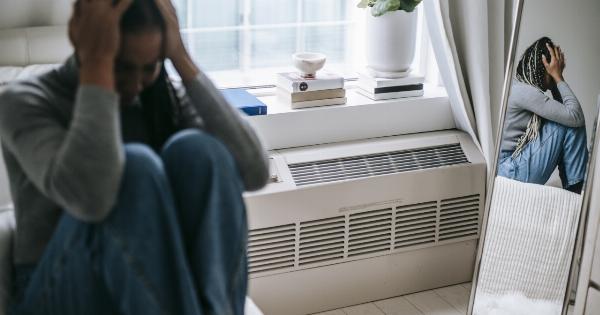Anxiety is a normal and sometimes necessary emotion that helps us to respond to certain situations and protect ourselves from danger.
However, when anxiety becomes excessive and persists over time, it can lead to significant impairment in daily life and even develop into an anxiety disorder. Here are seven common signs that may indicate the presence of an anxiety disorder:.
1. Excessive Worrying
Uncontrollable and excessive worrying about everyday situations, both real and imaginary, is a hallmark of anxiety disorder.
It often involves anticipating worst-case scenarios, constantly reviewing and analyzing past events, and fearing the worst possible outcomes. Individuals with excessive worrying often struggle to control their thoughts, even when they know they are irrational or unrealistic. This can lead to physical symptoms such as muscle tension, headaches, fatigue, and difficulty concentrating.
2. Panic Attacks
A panic attack is a sudden and intense surge of fear or discomfort that can last for several minutes. It often involves a rapid heartbeat, sweating, shaking, chest pain, shortness of breath, and the feeling of losing control or going crazy.
Panic attacks can occur unexpectedly or can be triggered by specific situations, such as social gatherings, public speaking, or being in confined spaces. Individuals with panic disorder often avoid situations that may trigger a panic attack, leading to significant limitations in their daily life.
3. Avoidance Behavior
Individuals with anxiety disorder often engage in avoidance behavior to protect themselves from situations or objects that they perceive as threatening or dangerous.
Avoidance can take many forms, including social withdrawal, school or work absenteeism, avoiding public transportation, or refusing to participate in certain activities. Although avoidance can provide temporary relief from anxiety, it often reinforces the belief that the situation is dangerous and leads to further anxiety and avoidance over time.
4. Obsessions and Compulsions
Obsessions are persistent and intrusive thoughts or images that cause significant distress or anxiety. Compulsions are repetitive behaviors or mental acts that are performed in response to obsessions to reduce anxiety or prevent a dreaded outcome.
Common obsessions include fear of contamination, unwanted aggressive or sexual thoughts, or the need for symmetry or perfection. Common compulsions include excessive cleaning, checking, counting, or repeating words or phrases in the head.
Individuals with obsessive-compulsive disorder may spend hours each day performing these rituals and experience significant impairment in daily life.
5. Physical Symptoms
Anxiety disorder can cause a range of physical symptoms, including headaches, muscle tension, digestive problems, shortness of breath, chest pain, dizziness, and fatigue.
These symptoms are often related to the body’s physiological response to stress and anxiety, including the release of stress hormones such as cortisol and adrenaline. Individuals with anxiety disorder may also be at increased risk for developing other health problems such as heart disease, diabetes, and autoimmune disorders.
6. Irritability
Anxiety disorder can cause irritability, impatience, and a short temper, even in response to minor stressors.
This may be related to the body’s physiological response to stress, including the activation of the fight-or-flight response and the release of stress hormones. Irritability can affect relationships, work performance, and daily life, and may lead to further anxiety and stress.
7. Sleep Problems
Individuals with anxiety disorder may struggle with sleep problems, including difficulty falling or staying asleep, frequent nightmares, or early morning awakening.
Sleep problems are often related to the body’s physiological response to anxiety and stress, including the release of stress hormones and the activation of the sympathetic nervous system. Sleep problems can further exacerbate anxiety disorder and lead to impaired daily functioning and reduced quality of life.
Conclusion
Anxiety disorder is a common and often debilitating mental health condition. It can affect individuals of all ages and backgrounds and can lead to significant impairment in daily life.
If you or someone you know is experiencing one or more of these symptoms, seek help from a mental health professional. With proper treatment, including therapy and medication, anxiety disorder can be effectively managed, and individuals can achieve improved quality of life.



























